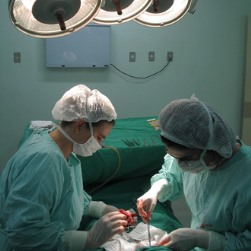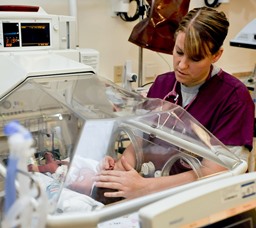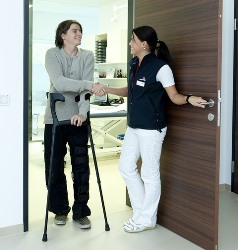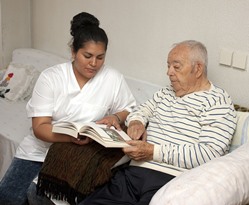How to Choose a Nursing College near Buffalo South Dakota
 Finding the right nursing program near Buffalo SD may seem like a complicated project, especially if you aren’t sure what to search for in a good degree program. As you may presently understand, to practice as a registered nurse, you need to receive the appropriate education and training in order to become licensed. So it is vitally important that you research and measure the qualifications of each school you are contemplating before enrolling in your ultimate selection. Regrettably, too many future students base their decision solely on the price of tuition and the nearness of the school. Picking the least costly program or the one that is closest to your residence is undoubtedly not the best way to decide on a nursing program. There are many essential additional factors to investigate before you decide where to attend classes. But before we examine that checklist, let’s first review what the role of a registered nurse is in our medical care system, as well as the nursing degree options that are available.
Finding the right nursing program near Buffalo SD may seem like a complicated project, especially if you aren’t sure what to search for in a good degree program. As you may presently understand, to practice as a registered nurse, you need to receive the appropriate education and training in order to become licensed. So it is vitally important that you research and measure the qualifications of each school you are contemplating before enrolling in your ultimate selection. Regrettably, too many future students base their decision solely on the price of tuition and the nearness of the school. Picking the least costly program or the one that is closest to your residence is undoubtedly not the best way to decide on a nursing program. There are many essential additional factors to investigate before you decide where to attend classes. But before we examine that checklist, let’s first review what the role of a registered nurse is in our medical care system, as well as the nursing degree options that are available.
Registered Nurse Job Activities
 Registered nurses are the most extensive occupation in the medical care delivery system. RNs practice in numerous different medical environments, such as Buffalo SD hospitals, private practices, outpatient clinics, nursing homes and even schools. Their general duty is to support doctors in the treatment of their patients. However, the specific duties of a registered nurse will be dependent on their job or area of expertise along with where they work. A few of the responsibilities of an RN may include:
Registered nurses are the most extensive occupation in the medical care delivery system. RNs practice in numerous different medical environments, such as Buffalo SD hospitals, private practices, outpatient clinics, nursing homes and even schools. Their general duty is to support doctors in the treatment of their patients. However, the specific duties of a registered nurse will be dependent on their job or area of expertise along with where they work. A few of the responsibilities of an RN may include:
- Administering medications
- Overseeing patients
- Performing physical examinations
- Coordinating care
- Supervising LPNs, LVNs and nurse aides
- Informing patients and their families
- Taking care of health records and charts
Nurses with a more advanced degree may have more high level job duties and accountabilities. Nurse practitioners (NP), for example, must hold a Master’s Degree and typically work more independently than their RN counterparts. They can provide primary or specialty care services, prescribe medications, and diagnose and treat basic illnesses or injuries.
Nursing Degrees
There is more than one degree option available to become a registered nurse. And to become an RN, a student must enroll in an accredited school and program. A student can obtain a qualifying degree in as little as 2 years, or advance to obtain a graduate degree for a total of 6 years. Following are some short descriptions of the nursing degrees that are offered in the Buffalo SD area.
- Associates. The Associate Degree in Nursing (ADN) is usually a 2 year program made available by community colleges. It preps graduates for an entry level job in nursing in medical facilities such as hospitals, clinics or nursing homes. Many use the ADN as an entry into nursing and later attain a more advanced degree.
- Bachelor’s. The Bachelor of Science in Nursing (BSN) offers more expansive training than the ADN. It is usually a four year program offered at colleges and universities. Licensed RNs may be allowed to complete an accelerated program based on their past training or degree and professional experience (RN to BSN). Those applying to the program might desire to advance to a clinical or administrative position, or be more competitive in the employment market.
- Master’s. The Master of Science in Nursing (MSN) is commonly a two year program after receiving the BSN. The MSN program offers specialization training, for instance to become a nurse practitioner or focus on administration, management or teaching.
After a graduating student has attained one of the above degrees, he or she must pass the National Council Licensure Examination for Registered Nurses (NCLEX-RN) to become licensed. Various other requirements for licensing fluctuate from state to state, so make sure to get in touch with the South Dakota board of nursing for any state requirements.
LPN Programs
 There are essentially two scholastic accreditations offered that provide training to become either an LPN or an LVN. The one that can be completed in the shortest time frame, normally about twelve months, is the certificate or diploma program. The second choice is to attain a Practical Nursing Associate Degree. These programs are more comprehensive in nature than the diploma alternative and normally require 2 years to complete. The advantage of Associate Degrees, aside from providing a higher credential and more in-depth instruction, are that they furnish more transferable credit toward a Bachelor’s Degree in nursing. No matter the kind of credential you seek, it should be South Dakota approved and accredited by the National League for Nursing Accrediting Commission (NLNAC) or any other national accrediting organization. The NLNAC guarantees that the syllabus properly prepares students to become Practical Nurses, and that most graduates pass the 50 state required NCLEX-PN licensing exam.
There are essentially two scholastic accreditations offered that provide training to become either an LPN or an LVN. The one that can be completed in the shortest time frame, normally about twelve months, is the certificate or diploma program. The second choice is to attain a Practical Nursing Associate Degree. These programs are more comprehensive in nature than the diploma alternative and normally require 2 years to complete. The advantage of Associate Degrees, aside from providing a higher credential and more in-depth instruction, are that they furnish more transferable credit toward a Bachelor’s Degree in nursing. No matter the kind of credential you seek, it should be South Dakota approved and accredited by the National League for Nursing Accrediting Commission (NLNAC) or any other national accrediting organization. The NLNAC guarantees that the syllabus properly prepares students to become Practical Nurses, and that most graduates pass the 50 state required NCLEX-PN licensing exam.
CNA Training
Unlike many other licensed nurses, certified nursing assistants do not need to obtain a college degree. CNA education can be acquired at Buffalo SD area community colleges or at vocational or trade schools. The length of the instruction can take anywhere from one to three months, leading to either a certificate or a diploma. Within the 1987 Nursing Home Reform Act, students are mandated to receive at least 75 hours of instruction, 16 of which have to be clinical or “hands-on” training hours. Keep in mind that this is the minimal period of instruction required and that each state has its own prerequisites. So it’s essential to make sure that the training program you enroll in not only complies with the federal requirements, but likewise those for South Dakota or the state where you will be practicing. One suggestion is to contact the health or nursing board for your state to make sure that the training is state approved. As well as the training, each state requires a passing score on a competency test for certification. Depending on the state, there might be additional prerequisites as well.
What to Ask Nursing Colleges
 Once you have chosen which nursing degree to pursue, and whether to attend your classes on campus near Buffalo SD or online, you can use the following pointers to start narrowing down your options. As you probably are aware, there are a large number of nursing schools and colleges within South Dakota and the United States. So it is important to lower the number of schools to choose from in order that you will have a workable list. As we already pointed out, the site of the school as well as the expense of tuition are most likely going to be the initial two factors that you will look at. But as we also stressed, they should not be your only qualifiers. So before making your ultimate selection, use the following questions to evaluate how your selection compares to the other schools.
Once you have chosen which nursing degree to pursue, and whether to attend your classes on campus near Buffalo SD or online, you can use the following pointers to start narrowing down your options. As you probably are aware, there are a large number of nursing schools and colleges within South Dakota and the United States. So it is important to lower the number of schools to choose from in order that you will have a workable list. As we already pointed out, the site of the school as well as the expense of tuition are most likely going to be the initial two factors that you will look at. But as we also stressed, they should not be your only qualifiers. So before making your ultimate selection, use the following questions to evaluate how your selection compares to the other schools.
- Accreditation. It’s a good idea to make sure that the degree or certificate program in addition to the school is accredited by a U.S. Department of Education acknowledged accrediting organization. Besides helping confirm that you obtain a quality education, it may help in obtaining financial aid or student loans, which are frequently not available in Buffalo SD for non-accredited schools.
- Licensing Preparation. Licensing requirements for registered nurses differ from state to state. In all states, a passing score is required on the National Council Licensure Examination (NCLEX-RN) as well as graduation from an accredited school. Certain states require a specified number of clinical hours be completed, as well as the passing of additional tests. It’s important that the school you are attending not only delivers an excellent education, but also preps you to comply with the minimum licensing requirements for South Dakota or the state where you will be practicing.
- Reputation. Check internet rating companies to see what the reviews are for all of the schools you are considering. Ask the accrediting organizations for their reviews too. In addition, contact the South Dakota school licensing authority to determine if there are any complaints or compliance issues. Finally, you can call some Buffalo SD healthcare organizations you’re interested in working for after graduation and ask what their opinions are of the schools as well.
- Graduation and Job Placement Rates. Find out from the RN colleges you are looking at what their graduation rates are as well as how long on average it takes students to complete their programs. A low graduation rate may be an indication that students were unhappy with the program and dropped out. It’s also essential that the schools have high job placement rates. A high rate will not only verify that the school has a superb reputation within the Buffalo SD healthcare community, but that it also has the network of relationships to assist students gain employment.
- Internship Programs. The most ideal way to acquire experience as a registered nurse is to work in a clinical environment. Almost all nursing degree programs require a specified number of clinical hours be completed. Many states have minimum clinical hour prerequisites for licensing as well. Check if the schools have a working relationship with Buffalo SD hospitals, clinics or labs and assist with the positioning of students in internships.
Nursing Online Programs
 Attending nursing schools online is growing into a more popular way to receive training and acquire a nursing degree. Certain schools will require attending on campus for a component of the training, and nearly all programs call for a certain amount of clinical rotation hours completed in a local healthcare center. But since the rest of the training may be accessed online, this alternative may be a more convenient approach to finding the time to attend classes for many Buffalo SD students. Pertaining to tuition, some online degree programs are less expensive than other on campus choices. Even additional expenses such as for commuting and study materials can be minimized, helping to make education more easily affordable. And many online programs are accredited by organizations such as the Commission on Collegiate Nursing Education (CCNE) for BSN and MSN degrees. Therefore if your job and household commitments have left you with very little time to work toward your academic goals, perhaps an online nursing program will make it easier to fit a degree into your active schedule.
Attending nursing schools online is growing into a more popular way to receive training and acquire a nursing degree. Certain schools will require attending on campus for a component of the training, and nearly all programs call for a certain amount of clinical rotation hours completed in a local healthcare center. But since the rest of the training may be accessed online, this alternative may be a more convenient approach to finding the time to attend classes for many Buffalo SD students. Pertaining to tuition, some online degree programs are less expensive than other on campus choices. Even additional expenses such as for commuting and study materials can be minimized, helping to make education more easily affordable. And many online programs are accredited by organizations such as the Commission on Collegiate Nursing Education (CCNE) for BSN and MSN degrees. Therefore if your job and household commitments have left you with very little time to work toward your academic goals, perhaps an online nursing program will make it easier to fit a degree into your active schedule.
Attending a Nursing School near Buffalo SD?
Perhaps you have already made your decision to attend a Nursing Program in the greater Buffalo South Dakota area. If that is the case, then the following information may prove to be both educational and useful regarding the location of your future Alma Mater.
Buffalo, South Dakota
Buffalo, South Dakota, is located at 45°35′5″N 103°32′42″W / 45.58472°N 103.54500°W / 45.58472; -103.54500 (45.584845, -103.545001).[10] According to the United States Census Bureau, the town has a total area of 0.55 square miles (1.42 km2), all of it land.[2]
As of the census[3] of 2010, there were 330 people, 168 households, and 86 families residing in the town. The population density was 600.0 inhabitants per square mile (231.7/km2). There were 220 housing units at an average density of 400.0 per square mile (154.4/km2). The racial makeup of the town was 97.3% White, 0.9% Native American, 0.3% from other races, and 1.5% from two or more races. Hispanic or Latino of any race were 1.5% of the population.
There were 168 households of which 22.0% had children under the age of 18 living with them, 41.7% were married couples living together, 7.1% had a female householder with no husband present, 2.4% had a male householder with no wife present, and 48.8% were non-families. 46.4% of all households were made up of individuals and 19.6% had someone living alone who was 65 years of age or older. The average household size was 1.96 and the average family size was 2.80.
Pick the Right Nursing Degree near Buffalo SD
 Choosing the right registered nursing program is arguably the most crucial first step to launching a new career in the medical care industry. There are many aspects that you need to take into account when deciding on a nursing school. These variables will be prioritized differently depending on your existing career objectives, lifestyle, and financial status. As we have emphasized in this post, it is critical that you pick an RN school and a degree program that are both accredited and have outstanding reputations within the health care community. By using our checklist of qualifying questions, you will be able to create a shortlist of schools to pick from so that you can make your ultimate selection. And with the right degree and training, combined with your hard work and ambition to succeed, you can become a practicing RN in Buffalo SD.
Choosing the right registered nursing program is arguably the most crucial first step to launching a new career in the medical care industry. There are many aspects that you need to take into account when deciding on a nursing school. These variables will be prioritized differently depending on your existing career objectives, lifestyle, and financial status. As we have emphasized in this post, it is critical that you pick an RN school and a degree program that are both accredited and have outstanding reputations within the health care community. By using our checklist of qualifying questions, you will be able to create a shortlist of schools to pick from so that you can make your ultimate selection. And with the right degree and training, combined with your hard work and ambition to succeed, you can become a practicing RN in Buffalo SD.
More Awesome Locations in South Dakota
